Every year since 2019, I have posted my top 10 multifamily real estate predictions for the year (and every year, we also calculate my accuracy, which has averaged 93%). My 2024 outlook is below, but for the first time, I’m adding a note to address some of the unique uncertainties that we face in the new year.
What are these uncertainties? Some stem from COVID-era economic moves, when the U.S. Federal Reserve used quantitative easing and zero interest rates to stimulate the economy, and Congress stopped debt payments on student loans and wrote checks to U.S. citizens and businesses. This, coupled with supply chain bottlenecks caused by COVID, created the conditions for the resulting 9% inflation. That compelled the Fed to increase interest rates—at the most rapid pace, on a percentage basis, in U.S. history—in an attempt to lower resulting high inflation down to 2%. And while it has fallen from 9% to about 3.5%, wage growth pressure remains. The revised 3Q 2023 GDP, 5.2%, was remarkably high for an economy whose federal interest rates jumped from 0 to 5.25% in 18 months.
The U.S. is a consumption-driven economy, and wage inflation, savings helped by the COVID fiscal stimulus, and homeowners’ ability to lock in mortgages at historically low rates kept consumers buoyant in 2023. Further fiscal stimulus in 2023 through the infrastructure and semiconductor bills also helped. However, Congress, which continues to spend, and the Fed which continues to aggressively combat inflation, need to get on the same page fast. With 2024 a presidential election year, we may see attempts to stimulate the economy, which will put more upward pressure on long-term interest rates.
I see one of two scenarios playing out in the next 12 months:
The Fed does not cut interest rates, leading to slow growth and a recession. This will happen if inflation sticks at 3.5%. The November UAW agreement with major carmakers is an example of enduring wage pressure. Other manufacturing companies will have to compete for labor, and this sets the earnings bar higher.
The Fed cuts interest rates, prompted by a slowing economy. This has been the pattern since the Great Recession. But the effect on inflation would perpetuate problems like the ones the country has had since 2022.
Of these two scenarios, I believe the first is more likely because I expect the Fed to keep the Fed funds target rate at 5.25% longer than the market expects it to do so. My predictions are underpinned by this assumption.
Beyond economic challenges, there are geopolitical concerns, including the war in Ukraine, the ongoing conflict in the Middle East and the potential conflict in China vis a vis Taiwan. With those observations, here are my predictions.
1: Interest rates will stay high.
Inflation has slowed since 2022, and so have interest rate hikes. All four increases in 2023 were 25 basis points (bps), unlike the 50 or 75 bps seen in 2022. But they haven’t been enough to lower inflation to the Fed’s goal of 2%. I see the 10-year Treasury yield remaining within the current range of 3.50% to 4.50%, with no expectation that it will drop substantially in 2024. The Fed must keep the Fed fund interest rate high long enough to slow inflation. More significantly, bond buyers are demanding a real return of 1.5% over the nominal interest rate, and U.S. government bond auctions are seeing low demand. These fundamentals are forcing long-term interest rates to remain higher than we would like or expect.
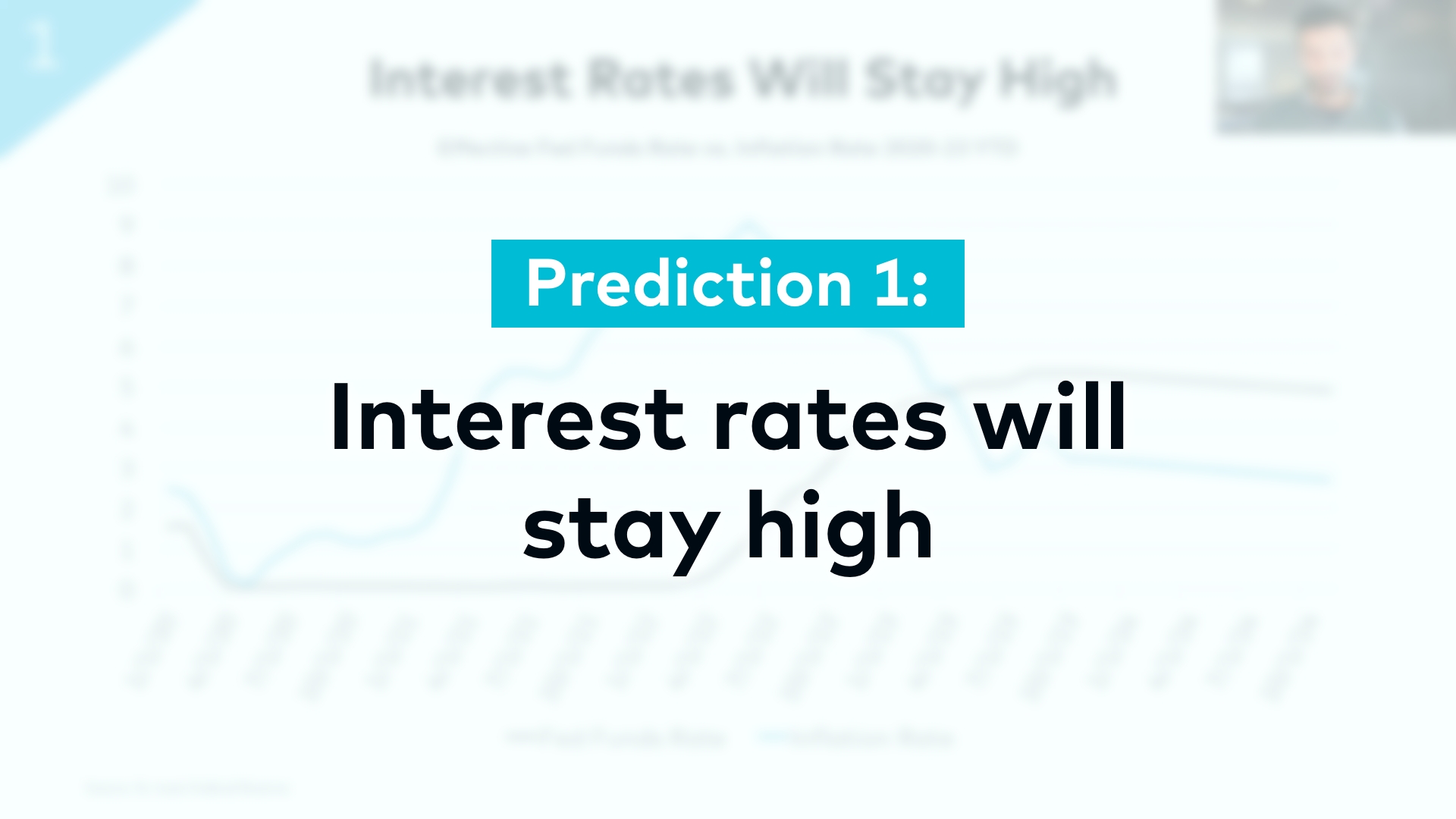
Effective Fed Funds Rate Vs. Inflation Rate, 2020-23 YTD

Source: St. Louis Federal Reserve
2: A recession is likely.
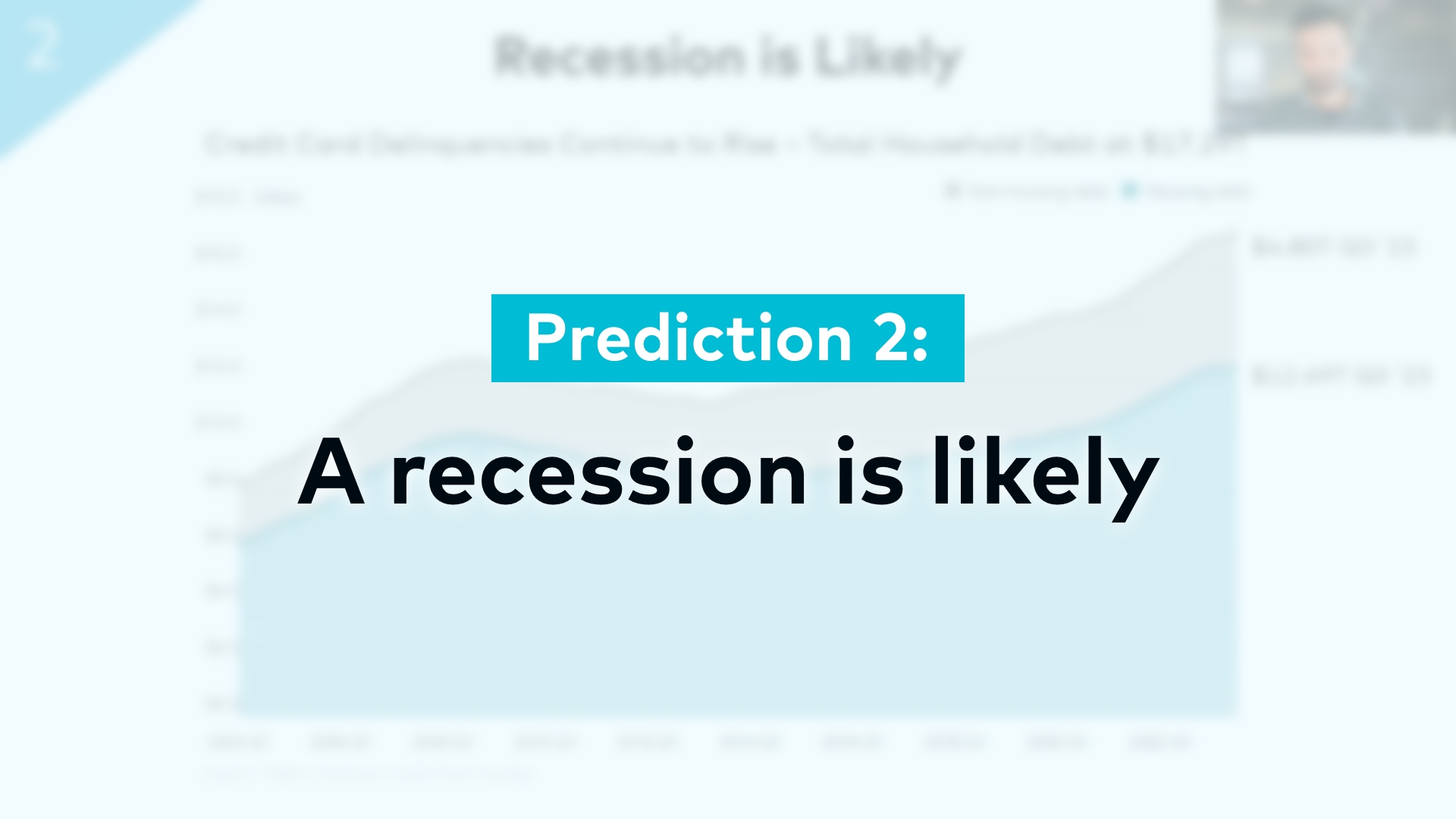
Despite all the predictions of a 2023 recession—including ours—it has yet to happen. Why not? Many, including us, didn’t fully account for the resilience of consumer spending and the robust job market. While homeowners who locked in low mortgage rates will have more cash flow for consumption, businesses will not have access to the credit needed to start or grow, and this will finally spur a mild recession in the latter half of 2024, deepening in 2025. As I said above, the fact that it’s a presidential election year may prompt attempts to stimulate the economy. However, a potential recession’s depth and breadth would depend on actions by the Fed and the Legislature, and whether the latter intervenes with fiscal stimulus.
3: Multifamily market fundamentals will remain strong.
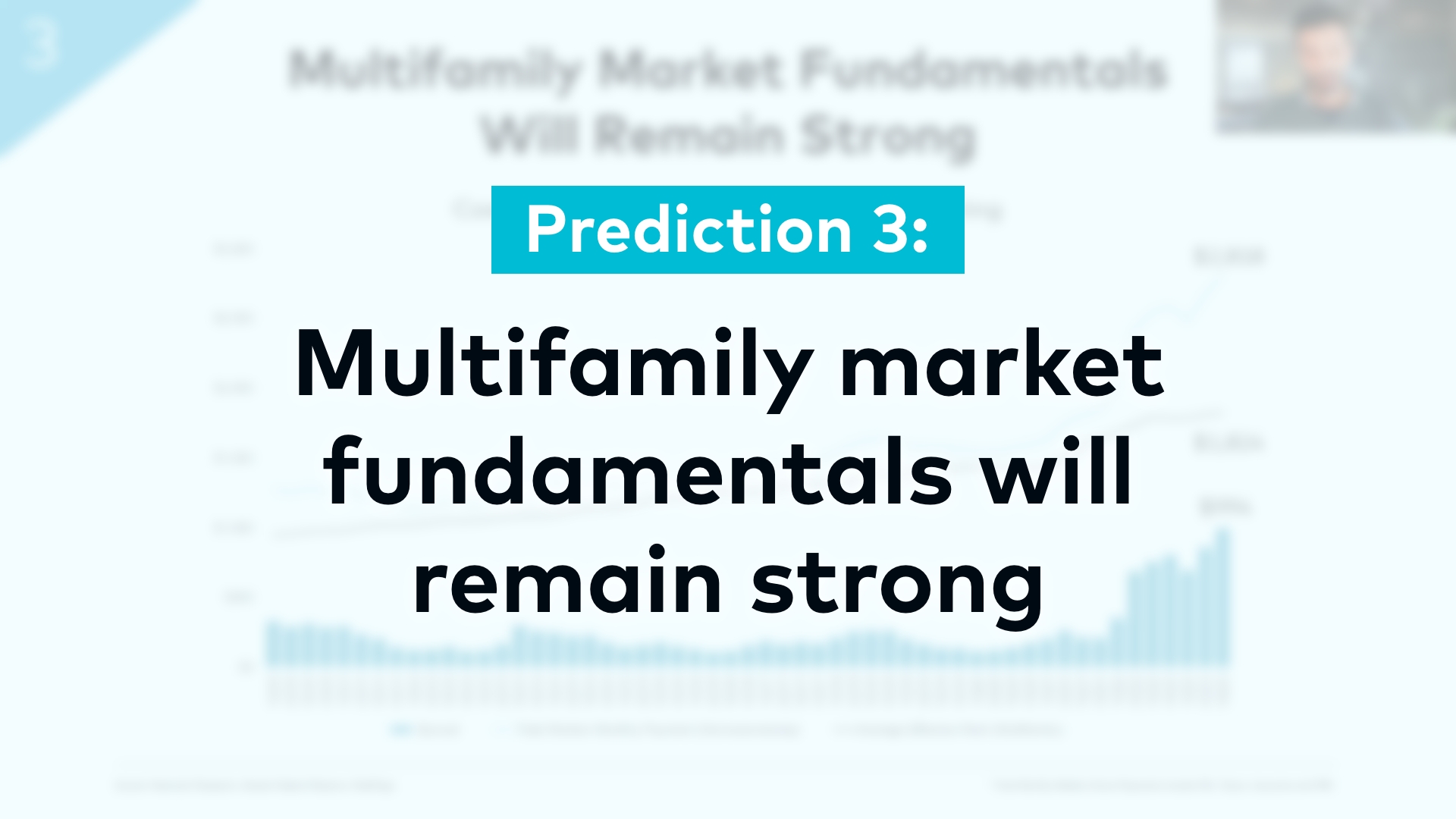
This is the worst time possible to buy a home; the price discrepancy between buying and renting is at its most extreme since 1996. With the total number of homes for sale at a record low and mortgage rates that top 8%, making the monthly payment on a median-priced home costs nearly $1,000 more; despite record unaffordability, home prices keep rising, Goldman Sachs has reported. Also, 57% of Americans say they prefer to live in larger houses, recent Pew Research showed, due in part to hybrid work. Yet homeowners who refinanced at low rates are unwilling to sell their homes and replace a 4% mortgage with an 8% one—even if they want or need more space—creating a supply drought and keeping home prices high. All this keeps demand and absorption for apartments and rental homes strong, even in the face of record supply, and likely to stay that way for years.
Cost of Homeownership Vs. Renting

Sources: Newmark Research, Federal Reserve Bank of Atlanta, RealPage
4: New multifamily development will come to a standstill, even as demand increases.
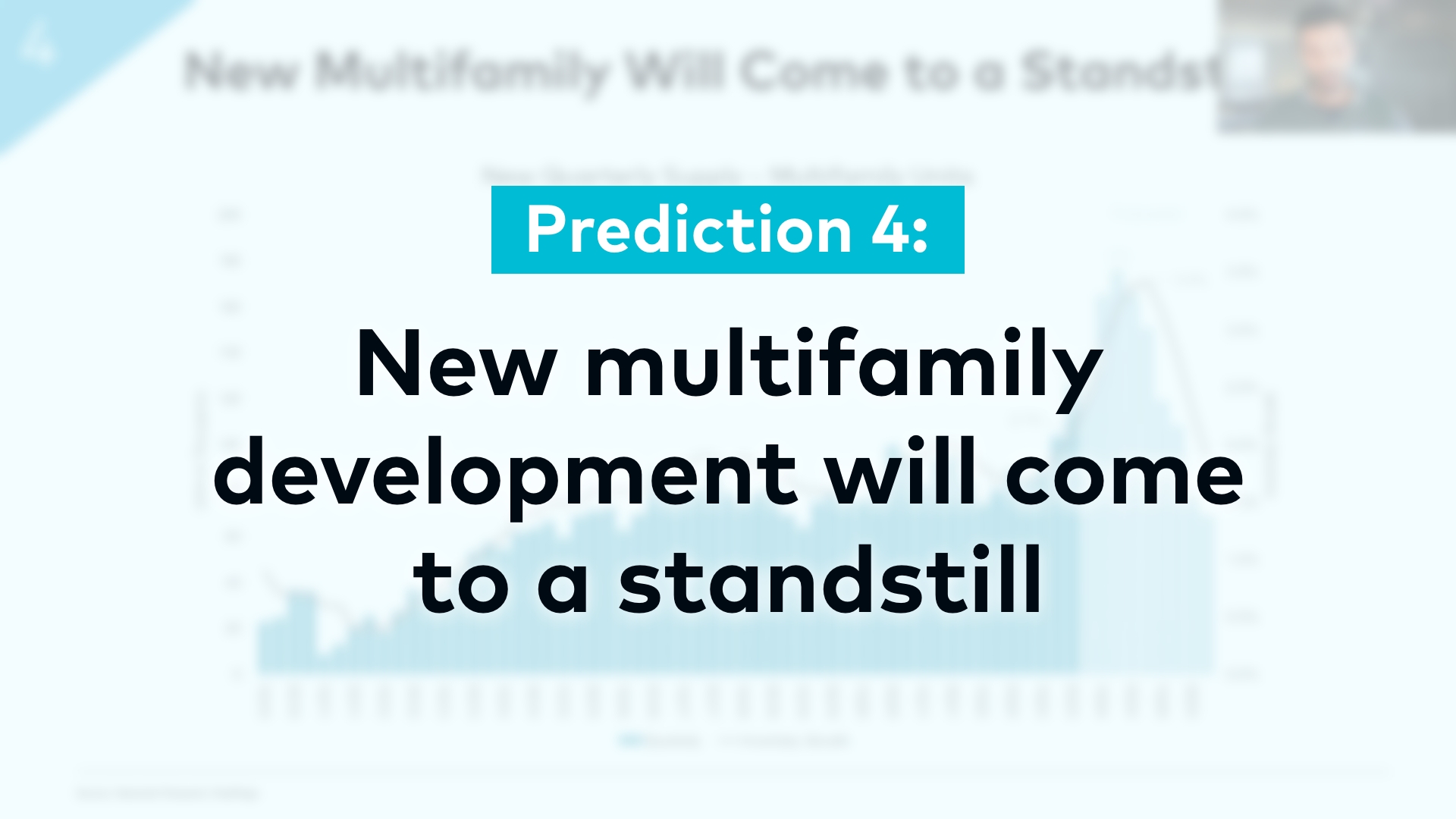
Real estate lending is shrinking to historically low levels, the Wall Street Journal reported recently, threatening a rise in defaults on expiring debt and spurring a sharp decline in new construction starts of apartments and other property types. Only $28.2 billion of loans converted into commercial mortgage-backed securities have been issued this year, the lowest figure since 2011. Not surprisingly, new apartment development starts have fallen dramatically this year due to higher interest rates, declining rents and oversupply. Because of all these issues, it will be 12 to 18 months before new construction gains momentum again.
5: Elevated multifamily valuations have mostly corrected but will fall lower.
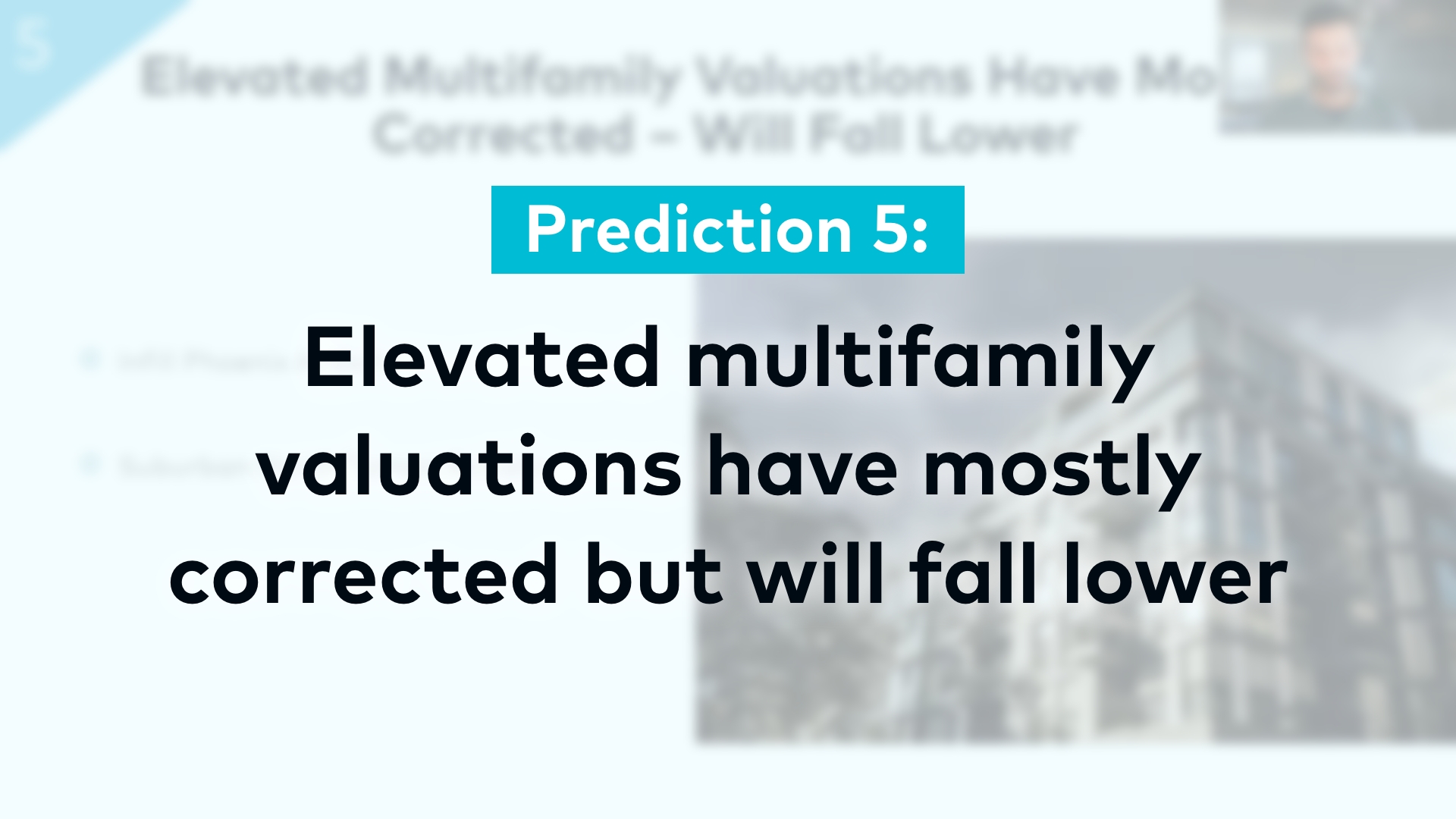
Multifamily asset valuations have dropped 15% to 30% and will drop about another 10% next year for two reasons: First, rents will remain flat or see low growth. Second, operating expenses—wages, taxes, insurance and more—have risen dramatically and may continue to rise. So, expenses are rising faster than revenue, and equity multiples are falling because of interest rates. Where we used to see multiples that were 30x earnings, it’s now more like 20x. We take these variables into account in our acquisition underwriting and leave comfortable margins to ensure healthy returns, but many owners will be underwater on 2021 variable-rate loans that come due in 2024 and were made at much lower interest rates than those offered on refinancing. It’s not a healthy, or sustainable, place to be when the cost of long-term debt is hovering at about 6.5% and cap rates are 150 basis points below that. This situation can only be corrected if cap rates increase or interest rates drop.
6: Rent growth will stabilize to historic norms.
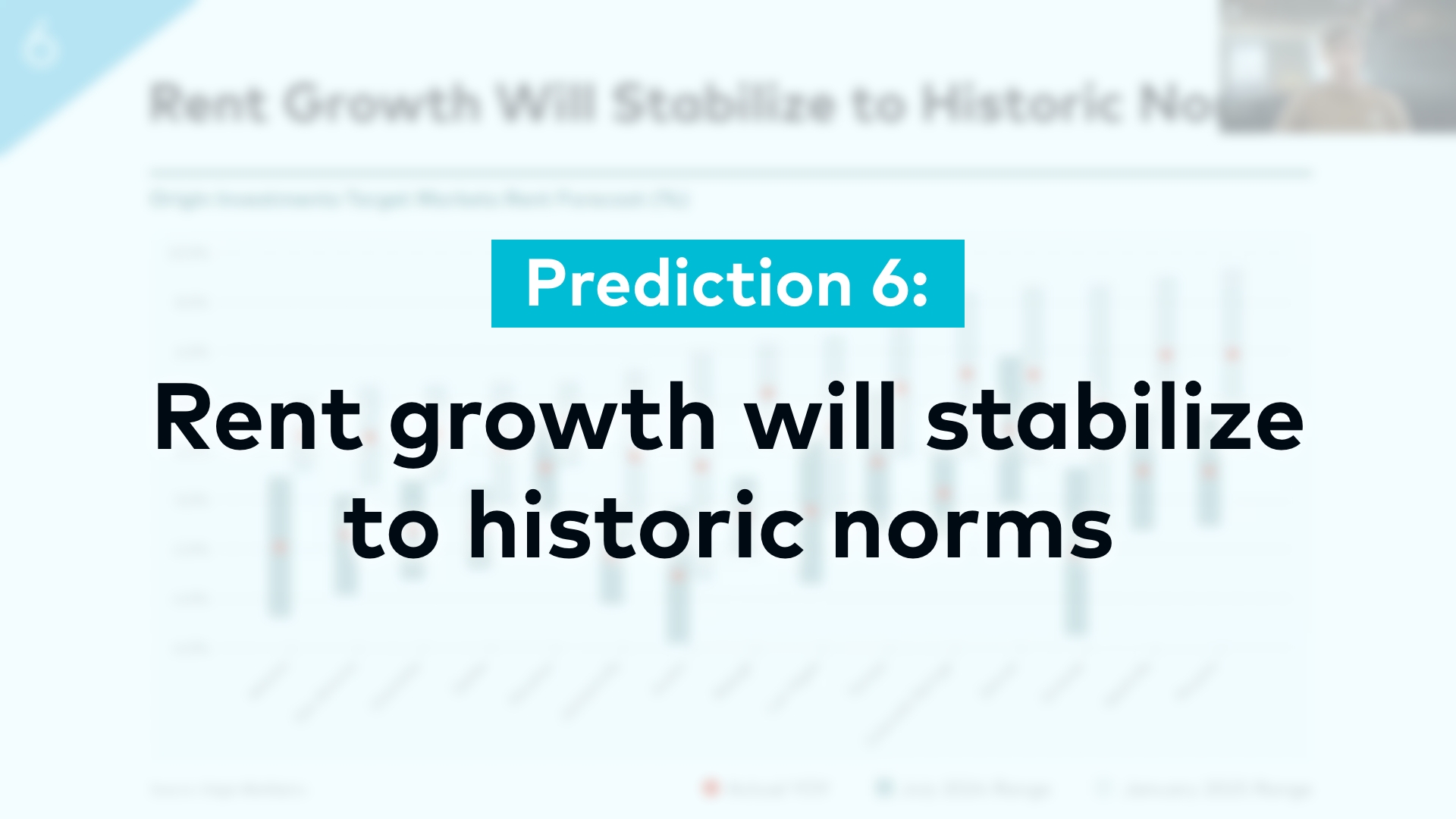
The negative rent growth in some markets in 2023, as predicted by MultilyticsSM, our proprietary suite of machine-learning models, will trend up in 2024 as we work through supply. They will head back to the historic norm—generally, within a 2% to 4% range—by Q3 or Q4, bringing rent growth back to 2022 levels, according to our latest Multilytics rent growth report. We saw average multifamily rent growth drop from September 2022 through 2023, and rather than gaining new ground, we will be catching up. This process will continue throughout 2024 and into 2025.
Origin Investments Target Markets Rent Forecast

Source: Multilytics℠
7: More distressed assets will emerge in multifamily in the second half of 2024.
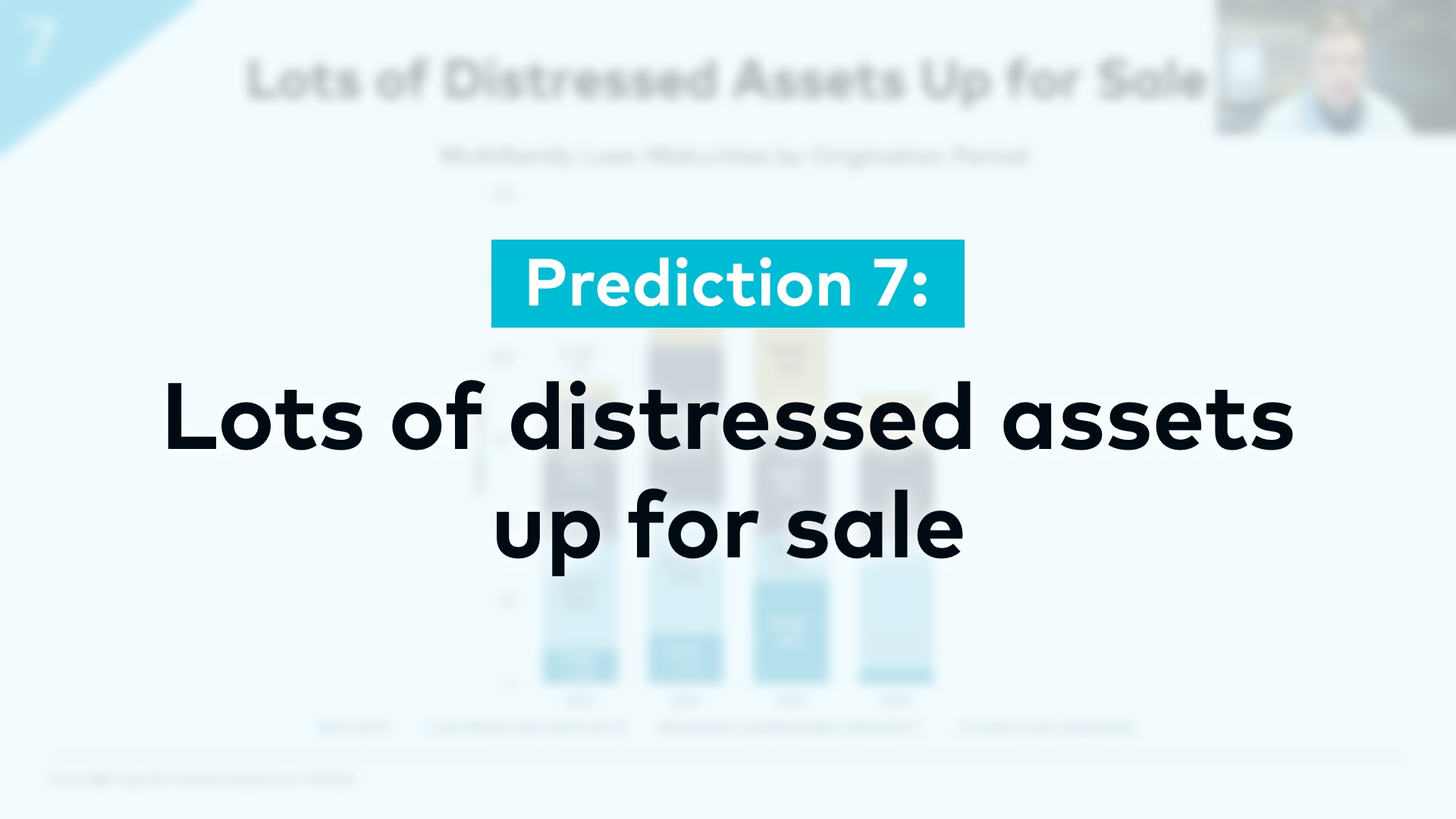
The variable-rate bridge loans mentioned above will come due next year, and many owners will not be able to afford the cash required to refinance them at today’s much higher rates—inspiring the use of the term “cash-in refi.” That’s because they did not manage risk properly by buying properties at prices well below replacement costs. By Q3 2024, we’ll have many opportunities to purchase quality multifamily assets with new valuations 30% or more below those of recent years. This will be a generational opportunity to buy quality value-add properties in growing markets at prices below replacement cost. It’s important to note, however, that this is a valuation problem for an otherwise solid asset class, not a demand problem.
Multifamily Loan Maturities by Origination Period

Note: As of Oct. 24, 2023
Source: MBA, Trepp, RCA, Newmark Research
8: Home prices will start to correct.
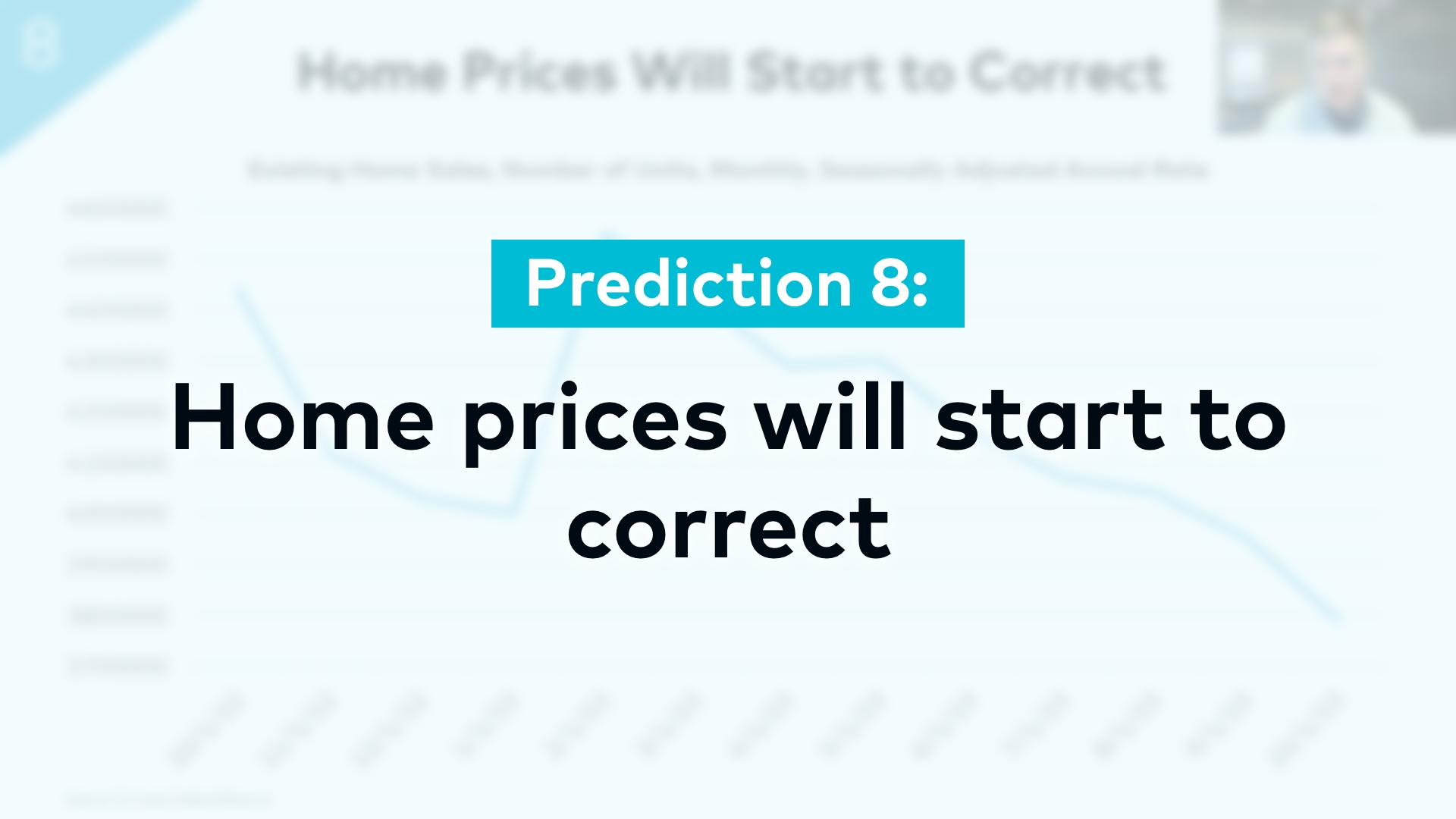
Many people can’t afford a home right now due to elevated interest rates, rising prices, lack of supply and higher insurance costs spurred by extreme weather. This has fed demand for build-for-rent housing that offers larger homes and outside spaces. The supply of available homes for purchase will increase as more new construction is delivered in 2024, and prices will rise more slowly than they did in 2022 and 2023. But I believe the market will begin to correct starting in Q3 due to strong job growth and demand—even as interest and mortgage rates remain close to (or top) 6% in 2024. People want to buy homes, and some will be able to afford them.
9: High insurance rates are here to stay.

Due to the increased frequency and severity of weather-related disasters, rising replacement and construction costs and inflation, insurance repriced in a violent way in 2022. Despite owners often getting less for their money, these rates are here to stay and will impact owners who haven’t broadened their margins to account for rising costs. This affects lending, valuations, cap rates, net operating income and more. For example, if our insurance for a 300-unit property was $500 a unit in 2022, and now it’s $1,000 a unit—a typical scenario today—that’s an extra $6 million to our operating costs. We have adjusted our Funds and yield projections for this and reject projects that don’t meet our required return on investment due to insurance costs. We don’t expect another dramatic repricing, but we don’t think insurance rates will go back down, either.
10: Consolidations will shrink the real estate investment industry.
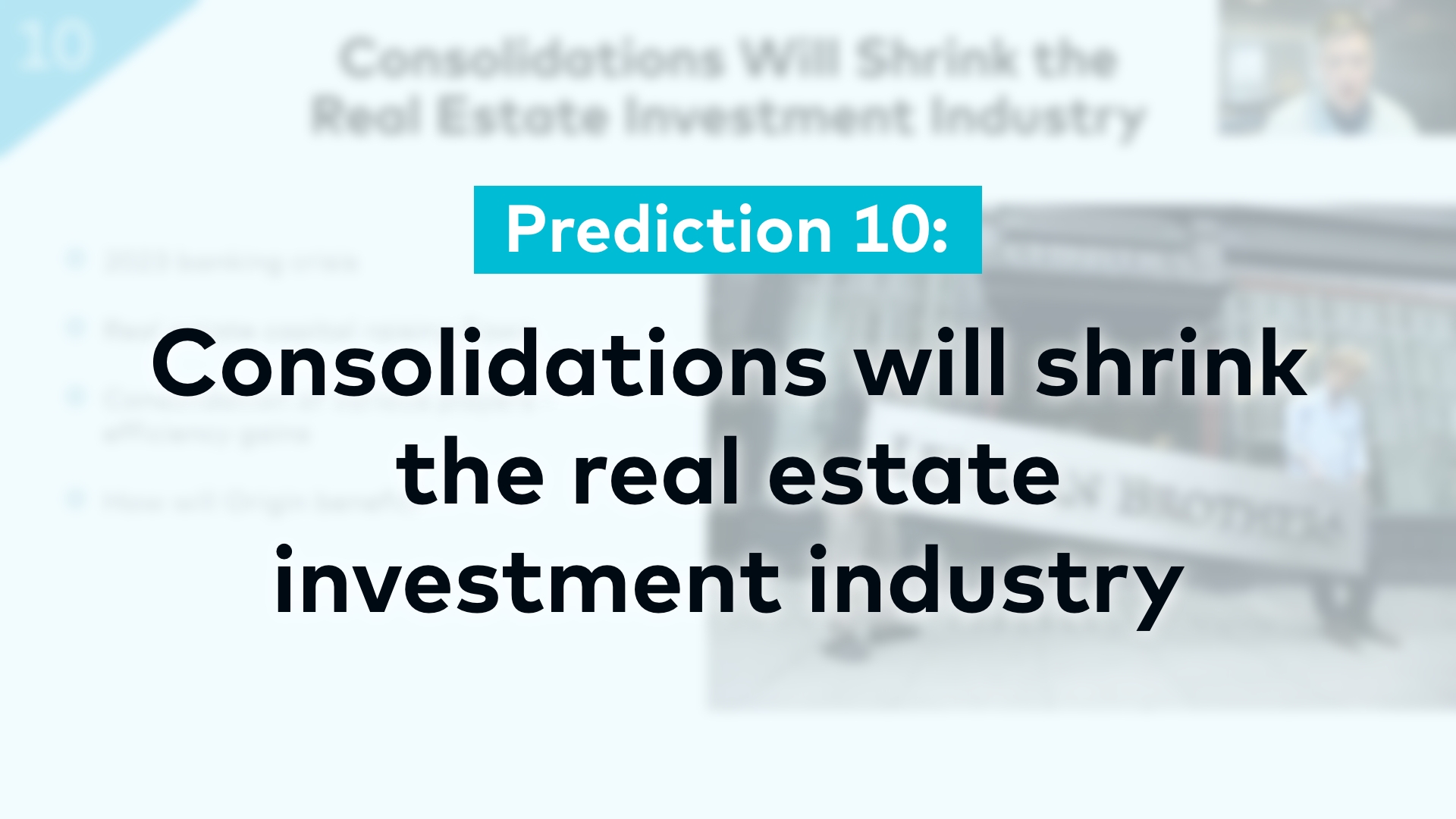
During and following the Great Recession, we saw investment capital go to the largest providers. That will happen again next year. Developers, general partners and sponsors, private equity managers and property managers will consolidate, and many companies will go out of business. We’re already seeing it as larger firms with greater resources purchase whole portfolios from smaller or under-resourced firms that no longer have robust balance sheets. When things get crazy, investors seek out bigger names with solid reputations.
Why I Remain Optimistic About Multifamily
Housing is an essential asset. And I remain bullish on multifamily real estate in the long term for several reasons: America has had a housing undersupply problem since the Great Recession. We’re currently facing a housing supply shortage between 5.5 million and 6.8 million units, according to the National Association of Realtors, and we need to build 4.3 more apartments by 2035 to meet demand, the National Multifamily Housing Council estimated. This undersupply is growing due to low multifamily starts in 2023 and will persist in 2024 as lenders continue to pull back. As well, multifamily investment returns have exceeded the average 25-year S&P returns over the past 25 years and provide higher dividends and tax efficiencies, including depreciation and more.
We are seeing generational opportunities in senior debt and preferred equity, both of which provide protection in the capital structure and the potential for 10% to 15% returns. The world is uncertain, but it remains a mistake to stay out of the investment market, and this will continue to be true in 2024.
Previous predictions: If you’d like to see my predictions for years past, you can find them here: 2023, 2022, 2021, 2020 and 2019.




